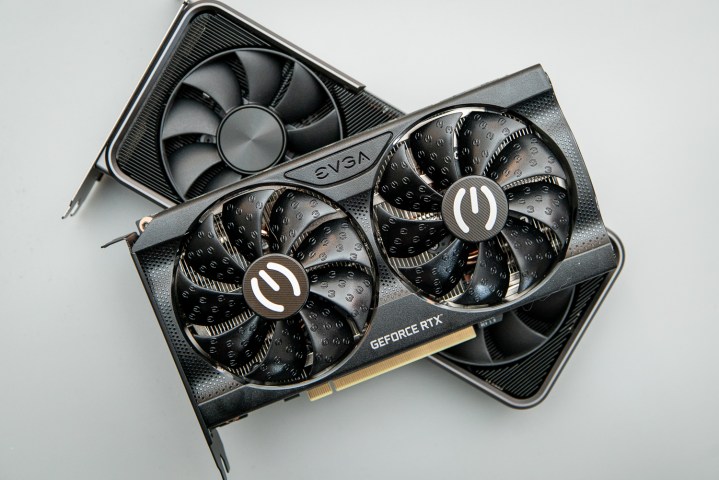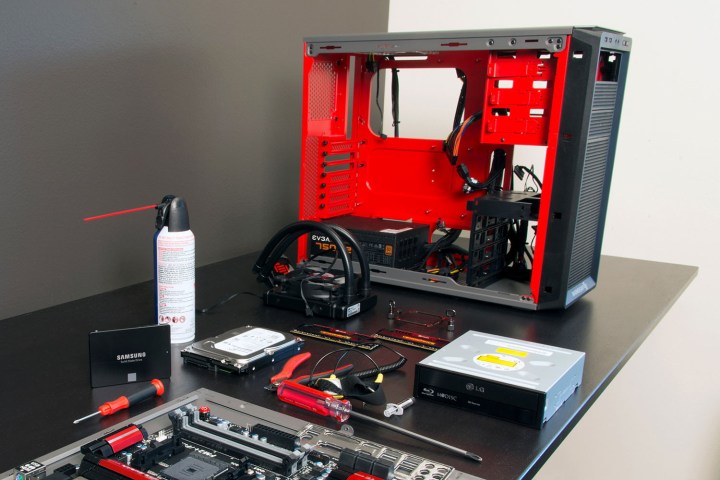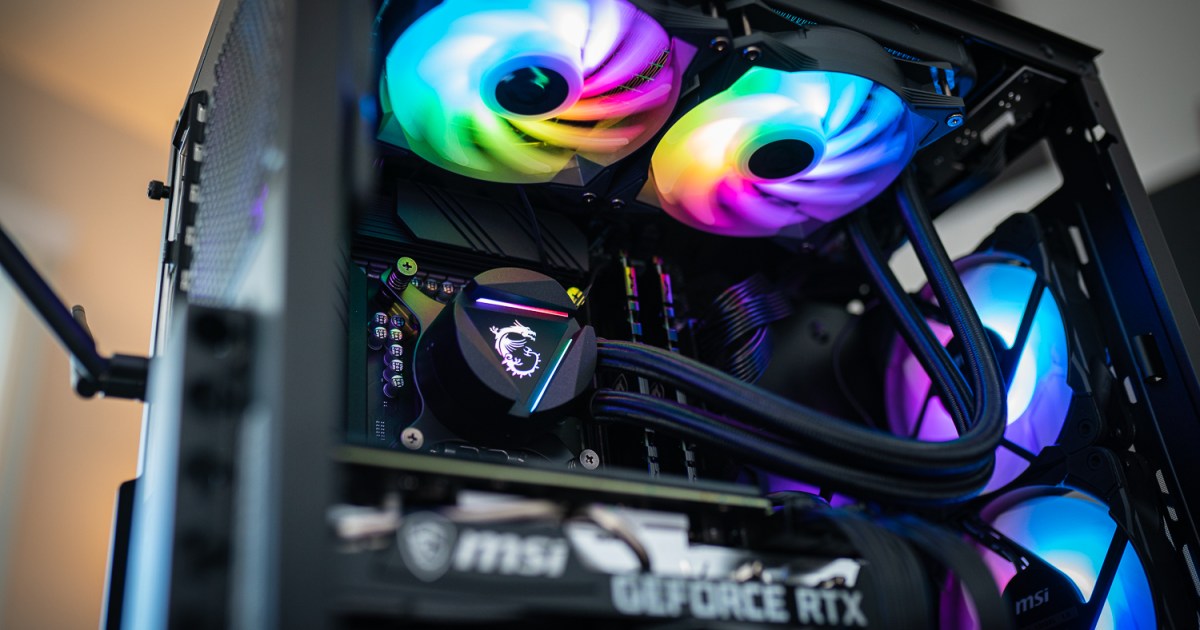Buying a prebuilt computer can be a costly mistake, unless you’re armed with some knowledge and planning on buying one of the best desktop PCs. The fact is that great prebuilt PCs are good, and bad prebuilt PCs are bad, ranging from anywhere between “it could’ve been better” to “you might as well have set your money on fire.”
Don’t get me wrong, prebuilt PCs have their merits. They’re an accessible gateway to using a desktop, be it for gaming or for other purposes, without needing to put together a whole PC build of your own. Even still, I’m never buying a prebuilt again. Here are some reasons why I’ll be sticking to my own builds, and why you should consider doing the same.
Misleading listings

There’s no denying that prebuilts are great for people who don’t have the time or energy to learn how different components work together, what works well, and what doesn’t. This is perfectly understandable. Even just picking out parts for a new PC can be overwhelming, and it only gets more difficult if you’re doing the assembling yourself. It makes sense to want to just have someone else do it for you, and there certainly are companies that do it well.
Unfortunately, many of them do not, and one of the main signs of such a company lies in the list of specifications. Gaming PCs are especially affected here, but these trends are present across many prebuilt models, entry-level and high-end alike.
Let’s say you found a listing with a PC for sale, and it sounds pretty exciting on the surface. It’ll say something along the lines of “Intel Core i7” or “Nvidia RTX,” implying top-notch components from well-known manufacturers. The pictures are often equally inviting. You’ll see RGB lights galore and fancy PC cases that make the computer look a lot better than it actually is on the inside.
Once you check the specs a little more closely, though, you’ll see a lot of unknowns and misleading information.
That impressive “Core i7” will turn into an Intel Core i7-7700, an aging CPU from several generations ago. The Nvidia RTX may end up being something like the RTX 3050, which is a GPU that you’re better off avoiding. Take
this Lenovo gaming PC
as an example. It comes with the powerful Core i9-12900K CPU, but is paired with a weak RTX 3050 GPU (and for a terrible price).
A worse example is this
Shuttle gaming PC on Amazon
. It draws in buyers with an RTX 4070, but it’s paired with an Intel Core i5-7500. That CPU isn’t supported by Windows 11, and it’s six years old. This build also comes with a 500-watt power supply unit (PSU), which is 150W below the minimum requirement for the RTX 4070.
You find these misleading listings particularly on budget builds found on Amazon and Newegg. Some will sell outdated components like Nvidia’s GT 1030 while marketing smooth 1080p gameplay. Another area where you’ll find misleading listings is RAM. Even some more recognizable PCs, such as the Dell XPS Desktop, only come with a single stick of RAM in their base configuration. Even if you have enough RAM, a single stick can effectively cut your bandwidth in half.
You could say this comes down to the buyer. After all, it’s important to do your research before any big purchase. But misleading listings are just the tip of the iceberg.
Mystery specs

My second gripe with many prebuilts lies in how mysterious the spec sheets tend to be … and by mysterious, I mostly just mean “empty.”
Let’s circle back to that example above, with the Intel CPU and the Nvidia graphics card. Even if the processor and the GPU are both recent and sound good, you’d be hard-pressed to find the manufacturer and model of the graphics card — and that can make a difference in terms of reliability, power draw, and performance. A lot of listings will just say something along the lines of “brand may vary.”
The “brand may vary” mystery continues throughout the less flashy specifications. Who cares about the power supply or the RAM if the GPU sounds fancy? Many people don’t, but they should.
I’ve done a good amount of research for this article, and I found a lot of prebuilts for sale where the specs were limited to total memory and storage size. Some listed PSU wattage, but many didn’t. I found these PCs in places where plenty of people shop, including Amazon, eBay, and well-known online retailers, so it’s not exactly a niche problem. It took me less than a minute to find the first such listing, and all I searched for was “gaming PC.”
The top result on Amazon is this
CyberPowerPC Gamer Xtreme desktop
, which comes with a Core i9-13900KF and RTX 4070. It looks like a solid build for the price, and it’s from a decently reputable brand. But it still doesn’t list critical specs like memory speed, power supply capacity, and efficiency rating, or the brand of GPU.
Even if you find a PC where the spec sheet is more than five components long, a lot of the time, it’s still pretty bare. You’ll be told that there’s 16GB of RAM, but nothing about the frequency or how that RAM is split. You may know that you’re getting a 750W power supply, but you won’t know the brand or the certification. Oftentimes, you won’t even know if these components are new or if they’ve been pulled out of a different PC.
I don’t mean to sound like a snob here. You don’t need to buy high-end components in order to build a good PC, and there are plenty of good brands for each component that are worth considering. Even the lesser-known options can serve you well for years. But whether it’s a motherboard, a graphics card, a processor, or a power supply, it’s important to know what goes into your PC. It’s even more crucial to know whether it’s strong enough to handle that particular setup.
My go-to advice for people in my circle who insist on buying pre-builts is always that they should be ready to at least upgrade the PSU and the cooler. I’ve heard of too many cases of either of those components simply being too weak to handle the entire build. The result? Thermal throttling, crashes, and other problems that end up in hours of frustrating troubleshooting.
Poor quality

Some prebuilts are of pretty poor quality, and there are a few reasons that play into that.
For one, the obvious way that a prebuilt can be profitable for the seller to save on some components. This leads to the aforementioned issue where you’re getting a bad power supply, cooler, RAM, and other often-overlooked components, but the graphics card and the processor are both decent. A PC is only really as good as its weakest component, so putting one of the best graphics cards in the company of a $40 power supply can end in disaster. PSUs are really the Achilles’ heel of prebuilts, but things like single-channel RAM are also somewhat common.
These cost-saving measures can add up to something truly terrible, such as the PC that Gamers Nexus reviewed in the video above. It was so bad, the YouTube channel went as far as to call it a “scam.”
The questionable quality also stems from the fact that sometimes these prebuilts just don’t make much sense. For instance, a “starter PC” from a popular PC builder comes in at around $1,400, despite packing low-end hardware.
Inside? An Intel Core i5-13400F, which is, admittedly, one of the best CPUs for gaming. Great start, but the rest of the specs don’t add up as you’re also getting an RTX 3050 (again, not a great idea) and a whole 32GB of DDR5 RAM, when a PC of that caliber is going to do just fine with 16GB. Priced in the ballpark of $1,400, this build is really not worth the money — but at least you can customize it.
Lastly, prebuilts are notorious for being difficult to upgrade, although that depends on the manufacturer. Some companies use proprietary components that can’t be replaced with standard parts, which means you can’t really swap things out if something fails down the line, and you also can’t upgrade. Others will void your warranty for making any changes to the inside of your PC, which means upgrades are impossible for at least a few years.
Worse value

For many people, the main difficulty of building a PC lies not in picking the parts, but in the assembly itself. This is a problem I fully understand and relate to, as it can be pretty scary to handle parts that are worth hundreds of dollars, and building your first PC can be pretty stressful.
Of course, buying a prebuilt erases those problems. The PC that arrives at your doorstep (or drives home with you from the store) is as plug-and-play as it gets, often coming with Windows already installed. Therefore, it makes perfect sense that retailers would charge a premium for selling you a product that’s ready to use without any extra effort.
Even with that premium in mind, prebuilts are simply worse value a lot of the time. You can easily check for yourself by adding all the components to the cart, at the very same retailer, and checking the difference in price. Oftentimes, it’ll be huge, and it’ll only grow if you shop around and look for the best deals from more than one retailer.
How to buy a solid prebuilt

I realize that what I’ve said above paints prebuilts in a pretty negative light, but it’s important to say that not all prebuilts are bad. On the contrary, there are companies that do it right, and those PCs can be a good way to save yourself some time and stress if you’re not quite ready to build your own computer from scratch.
Here are a few tips if you want to avoid the pitfalls of buying a desktop PC.
- Do your research: This is really the key to buying electronics. Read some reviews online, check out our guides to the best desktop PCs and best gaming PCs, and visit community-driven websites like Reddit to hear more about a particular company or model. Oftentimes, you’ll learn everything you need to from a 10-minute deep dive in Google.
- Don’t buy unless you know all of the specs: Turn to companies that have no problem revealing the exact name, brand, and model of each component. That gives you the option to do even more research into every part, or, at the very least, tells you that the company has nothing to hide and you won’t get a 500-watt PSU with an RTX 4090. And if there’s a prebuilt you are interested in that doesn’t list the full specs, look up an independent review.
- Go with customizable prebuilts: A prebuilt can still give you plenty of room for customization if the retailer allows that to happen. You may sometimes get a better deal if you make slight adjustments that help you future-proof the PC or tailor it more to your current needs. Some solid brands that do this are Maingear and Origin PC.
- Stick to recent components: If you’re in the market for a gaming PC, don’t let any listing fool you into thinking that components from five or six years ago are great. They’re fine, but not great. A safe bet is to stick to the last two to three generations unless you’re buying a budget computer.
- Consider using an assembly service: Some retailers let you just buy the parts and assemble your PC for you for a small fee, such as Micro Center in the U.S. This can be a nice middle ground, provided the store is trustworthy.
Armed with the above, you might spot a great pr-built desktop. It’ll still cost you a little extra compared to buying only the parts, but it’ll also save you a lot of trouble. One thing is for sure — steer clear of those mysterious PCs with empty spec sheets if you want to avoid a major headache. It’s never going to be worth it.
Editors’ Recommendations

